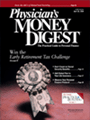Close-Up: Mold
n.
Mold: Mold is a fungus that grows throughout the natural and synthetic environment. Tiny particles of mold are present in both indoor and outdoor air.
USA Today
Not too long ago, our knowledge of and contactwith mold was limited to examining apetri-dish specimen in high school biologyclass. No one knew much about mold andno one really cared. Today, all of that has changed.Toxic mold has been found in homes and buildings bothold and new, from Sacramento to New York. Accordingto an article in , it affects everything fromexclusive new apartments and condominiums toneglected tenements.
Mold's impact is twofold. First, it can make you andyour family ill. According to the Minnesota Departmentof Health, people exposed to mold commonly reportproblems such as nasal and sinus congestion, breathingdifficulties, sore throats, skin and eye irritation, andupper respiratory infections. In addition, building materials,including goods and furnishings in your home,may be damaged to the point where your family has toevacuate the premises.
Home Investigation
Experts agree that the best way to check for a moldproblem is to use your eyes to spot mold growth andyour nose to locate the source of suspicious odors.Mold needs only a few simple elements to grow andmultiply, of which moisture is the key ingredient.When inspecting for mold, the Minnesota Departmentof Health recommends you look for water leaks, waterstains, or condensation problems. This may mean havingto search behind or underneath carpeting, wallpaper,vinyl flooring, and furniture.
Visible mold growth is not difficult to spot. Moldoften appears as discoloration, staining, or fuzzygrowth on the surface of building materials or furnishings.It may appear cottony, velvety, granular, orleathery, and it could be present in varying colors ofwhite, gray, brown, black, yellow, or green.
Another clue as to the presence of mold is theworsening of allergy-like symptoms. A 1999 MayoClinic study found that nearly all of the chronic sinusinfections afflicting 37 million Americans could beattributed to molds.
Cleaning Up Mold
Since moisture is the main ingredient in fosteringmold growth, your first step after identifying a moldproblem should be to correct the source of moisture.Common sources include flooding, condensation, androof and plumbing leaks. However, excess moisture canalso be caused by firewood stored indoors, inadequateventing of kitchen and bathroom humidity, line dryinglaundry indoors, and watering of indoor house plants.
After you've identified the source of moisture, dryall wet elements. This can be done with a fan or dehumidifier.Move all wet items away from walls and offthe floor. Some items that have absorbed moisture orhave mold growing on them must be bagged and discarded.This could include sheet rock, carpet andpadding, ceiling tiles, and insulation.
Take steps to protect yourself and others when workingaround mold. The Minnesota Department of Healthpoints out that mold particles in the air can increase significantlywhen mold is disturbed. Take precautions bywearing rubber gloves and eye goggles. In addition, wearlong-sleeve shirts and long pants and remove them in thework area when done rather than walking through yourhome with them. Any mold-infected materials that youdiscard should be placed in plastic bags before carryingthem through your home. You might also want to considerhanging plastic sheeting to separate the work areafrom the rest of your home.
Some nonporous materials (eg, hard plastic, concrete,glass, and solid wood) can be cleaned of existingmold. Scrub all mold-infected surfaces with a stiff brush,hot water, and a nonammonia soap or commercialcleaner. Afterwards, rinse the area with clean water andcollect all excess rinse water using a mop or wet/dry vacuum.As an option after cleaning, you can also use a disinfectantto kill any mold you may have missed. Simplymix about 1/2 cup of bleach for every gallon of waterand apply it to the surfaces where mold growth was visibleusing a spray bottle or garden sprayer. Allow thebleach solution to dry on the surface.
Pop Quiz
1) Mold can make you ill and cause
- Nasal and sinus congestion
- Skin and eye irritation
- Upper respiratory infections
- All of the above
2) The key ingredient fostering mold growth is
- Moisture
- Heat
- Shade
- Dryness
3) Watering indoor plants can contribute to excessmoisture and mold growth.
- True
- False
4) Take precautions when you are working with moldby wearing
- Rubber gloves
- Eye goggles
- Long-sleeve shirts and pants
- All of the above
5) A big problem with mold-inspection companies is
- They don't use the proper equipment
- They charge too much money
- They're not required to be licensed
- They're hard to find
Answers: 1) d; 2) a; 3) a; 4) d; 5) c.
